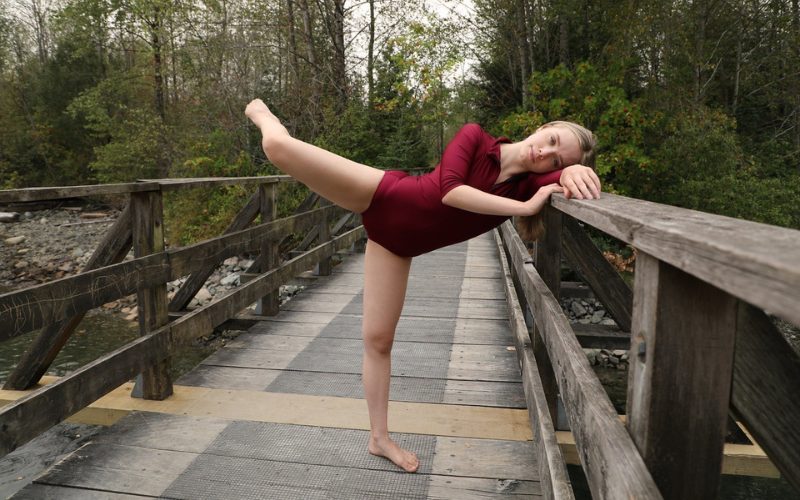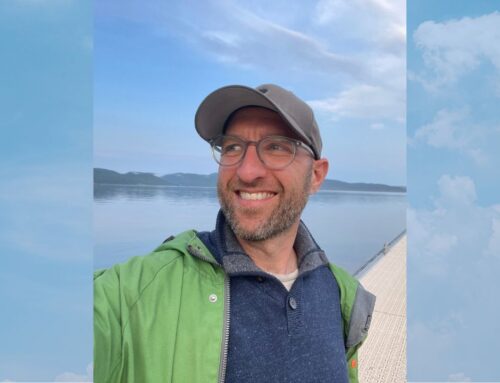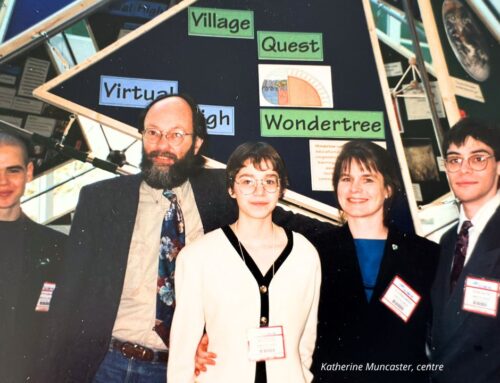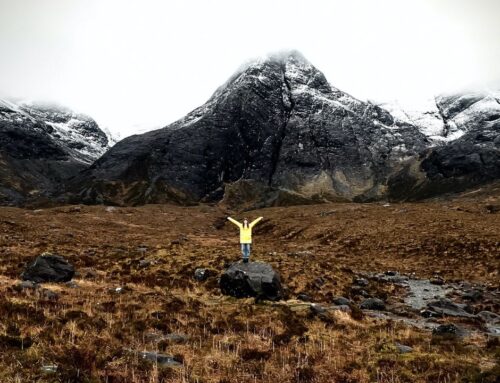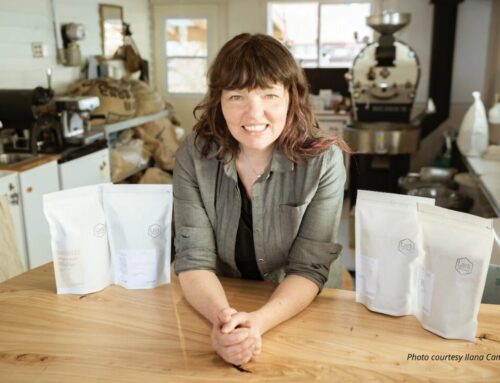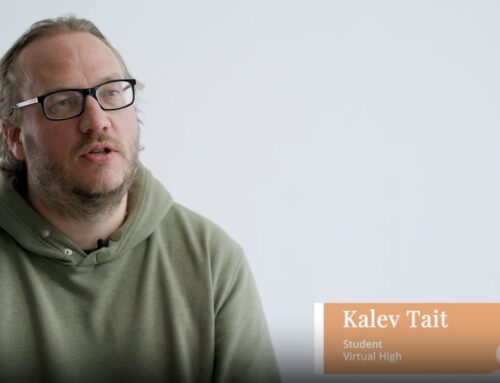Interview with SelfDesign alum Amanda, Class of 2020
Amanda finished her SelfDesign journey in 2020. She was one of the first group of learners who piloted our integrated grade 10 to 12 program through its three-year rollout.
Like many others her age, she finished grade 12 at the start of the COVID pandemic. Although that affected her and her peers at SelfDesign far less than those at brick-and-mortar schools, it made her reconsider her career options. The avid and talented dancer found few opportunities to dance at her level during the pandemic and started teaching dance instead. She also decided to pursue a degree at university.
This interview is one of a series of profiles about SelfDesign alumni prepared to help us celebrate SelfDesign® Learning Foundation’s 40 years of personalized learning.
![]()
Read about other SelfDesign alumni
We caught up with Amanda recently to talk about what she’s been doing since she commenced and how SelfDesign prepared her for her ongoing learning adventures.
The following interview has been edited for brevity and clarity.
▶️ SelfDesign (SD): What have you been doing since you finished at SelfDesign?
Amanda: I’m now in the third year of my undergraduate degree at Simon Fraser University, in the B.C. Lower Mainland. I’m studying psychology, taking courses full time.
I’m also volunteering in three research labs at the university. One is a social psychology lab that researches happiness, well-being and pro-social behaviour. The second lab is a clinical psychology lab, where I’ve been since spring 2023. It focuses on autism and developmental disabilities, and I’m helping them do some work on that. And the third lab is a developmental psychology lab, where we do research on parenting and families.
Most of my time with the labs is spent collecting data. I interact with research participants for different projects that the labs have going on. I meet with the participants, walk them through the procedure, and give them different surveys. I also do a bit of knowledge translation, which involves taking the research and the articles that the labs have produced and finding a way to communicate them to the layperson. And I do administrative support, as well.
▶️ SD: How did these volunteer positions come about for you?
Amanda: When I was figuring out what I wanted to do as a career, clinical psychology was something that came up, and I’d heard from other students and from some of my professors that, if you want to get into clinical psychology, you need research experience.
But labs are hard to get involved in. I was really lucky. I had a professor — the one with the social psychology lab — who had emailed a number of students who had done well in her class and invited us to apply. I was like, “Okay, this is a way in. I should try research.” I applied, and I started working in her lab in August 2022. That’s where I got most of my initial lab experience.
Then, as I took more classes and learned more, I became more interested in clinical child psychology. The autism lab runs summer camps, and I volunteered at those and then was invited to join the lab.
And I reached out to the third professor recently because I thought her work was interesting.
▶️ SD: What interests you about psychology as a career?
Amanda: I’m interested in the clinical side of it. I want to work with kids who experience mental health struggles or with underprivileged youth, for example, youth in the foster care system. That’s where my heart is. I have recently taken a major interest in the field of developmental disabilities, especially in advocating for increased knowledge of neurodiversity in the field of psychology.
So when I started university and found out that I actually liked studying clinical psychology, it seemed like a good mix. I could do a little bit of the helping clinical work — working with clients and families and all that — and also do the academics and the research. It’s kind of the best of both worlds. And there’s such a need for clinical psychologists for children.
So, right now, at least, that’s what I think I’d like to do.
It means I’ll have to apply to graduate school and get my doctorate. It’s a really competitive program, but I’m motivated. I’m doing all the things I can do. Hopefully, it pays off.
▶️ SD: How has your experience as a SelfDesign learner prepared you for what you’re doing now?
 Amanda: Time management is a big one! Practising the skills of being self-directed in high school and learning all that long before I even stepped foot into a university lecture hall was so helpful. Seriously, I don’t think there’s anything that could have prepared me better, because the way that work is assigned in university feels like the same format of the course work I did with SelfDesign. You’re given the expectations — what you’re supposed to complete and the deadlines that it needs to be done by — and you’re responsible for doing it. I think you learn these self-directed time management skills only through practice, and SelfDesign allowed me to practise them.
Amanda: Time management is a big one! Practising the skills of being self-directed in high school and learning all that long before I even stepped foot into a university lecture hall was so helpful. Seriously, I don’t think there’s anything that could have prepared me better, because the way that work is assigned in university feels like the same format of the course work I did with SelfDesign. You’re given the expectations — what you’re supposed to complete and the deadlines that it needs to be done by — and you’re responsible for doing it. I think you learn these self-directed time management skills only through practice, and SelfDesign allowed me to practise them.
Another skill I developed at SelfDesign is how to generate ideas when given a template or a prompt for working through a topic or an assignment. The way all the weekly learning challenges we were assigned in grades 10 to 12 were laid out was, “This is what we want you to take away from it, but we also want you to explore what interests you and what you want to dive deeper into.” I’m using those same skills and prompts to generate assignments and topics for my courses at university.
SelfDesign also helped me to learn to recognize when I need to reach out for help. At SelfDesign, there were learning consultants and a support system, but we weren’t seeing those people every single day in a physical space. I had to learn to recognize, “What do I need? What can help me support myself?” In post-secondary education, nobody is checking in on you. You have to be ready to seek out opportunities and to seek help when you need it.
It’s pretty neat that I was able to practise all that when I was in high school. A lot of my peers struggled with these three basic skills in their first few years of university, but for me, I was already comfortable with them.
▶️ SD: What brought you to SelfDesign in the first place?
Amanda: Originally, my two sisters and I were enrolled in a private school in the Lower Mainland. We’d barely started — it was at the start of grade two for me — when the school closed that November. My parents didn’t want to put us in another new school, so they decided instead to have us learn from home. My mom, who works in education, found SelfDesign, and we all did SelfDesign for the rest of that school year.
Then we went to another program for a few years. That was okay, but it wasn’t filling our needs, so when I was in grade six, my mom said, “Okay, SelfDesign — let’s try it again.” So we returned to SelfDesign, and we each stayed on through grade 12.
Also at that same time, I was getting really involved in dance, and SelfDesign allowed me to train at a higher level in dance while maintaining my academics. I didn’t have to give dance up. If anything, I could integrate it into my schoolwork.
▶️ SD: Are you still dancing?
Amanda: I’m not dancing anymore, no. I stopped after grade 12 because of the pandemic, and I transitioned to teaching dance pretty quickly. So, on top of all the lab work and the university course work, I’m a part-time dance teacher. I teach jazz and acro dance [a style of dance that combines classical dance technique with precision acrobatic elements]. I teach mostly 12- and 13-year-olds, but also kids as young as six and as old as 16.
I’m so lucky to have a part-time job that I love. It energizes me to be with the kids and to be doing something that I enjoy.
▶️ SD: What is your favourite memory of being a SelfDesign learner?
Amanda: For one of my personal projects, I choreographed a dance. I hadn’t done any choreography to that point, but my younger sister is also a dancer, so I decided, “Okay, I’m going to create a solo for her and use it as my personal project.”
I choreographed a modern solo piece. I filmed my sister dancing it, and I talked a little bit about how the creative process and the physical properties of the movement related to the coursework I had done. I also talked a little bit about the history of modern dance. It was nice to be able to really dive into what I was doing.
My sister ended up competing that dance routine and somehow qualified for the BC Dance Provincials. She’s a fantastic dancer, and I’m only saying “somehow,” because at age 15, this was the first piece I’d choreographed. She qualified with that piece, and she ended up being runner-up in the BC Provincials that year with that dance… which I had created for a personal project in grade 11!
It was the craziest thing. I had been really nervous about doing the dance as a project to begin with… and then to have it competed… and then it just kept doing well…. I felt like, “How is this even happening?”
And SelfDesign allowed me to pursue those interests as part of my schoolwork.
▶️ SD: What did you like most about being a SelfDesign learner?
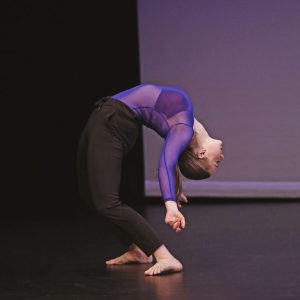 Amanda: I think what I liked most was that everyone is so accepting and supportive of each learner, and each learner is accepted as an individual with their own set of interests, their own set of strengths, and all that. Every person whom I interacted with valued my strengths and supported me.
Amanda: I think what I liked most was that everyone is so accepting and supportive of each learner, and each learner is accepted as an individual with their own set of interests, their own set of strengths, and all that. Every person whom I interacted with valued my strengths and supported me.
The biggest thing that this did for me was help me build confidence. In high school, I was never really confident in academics. The educators I had in SelfDesign and the program itself helped me build this academic confidence and skills that have led me to pursue an academic career path, which is never something I thought was possible for myself. I feel like the program is very strengths-based, and this approach allowed me to push myself without fearing failure because failure didn’t exist in SelfDesign. If you didn’t do well in something it was seen as an opportunity to improve, not a determinant of your ability. I think that’s so important, because the whole point of school is that it’s where you learn and where you can make mistakes — and where you should be allowed to make mistakes and to grow.
▶️ SD: What advice would you share with today’s SelfDesign learners or recent SelfDesign grads?
Amanda: If they’re currently in the program, I’d tell them to take every opportunity they can to meet people, to talk to their teachers, to talk to their peers, and to dive into every learning opportunity that comes. That’s something I wish I’d done more of. I was super shy. I was nervous about interacting with my peers online. It’s kind of weird, but those skills with online interactions, especially in today’s world, are so valuable. Spend time getting to know yourself and how you learn, because regardless of if you pursue post-secondary, learning is a lifelong process and it is SO valuable to get to know how you do it best.
And to recent graduates looking to go to university, I’d say “You’ll be fine.” Because I, too, wondered, “I didn’t go to regular school. What’s university going to be like? Am I going to be able to do it?”
So, to recent graduates, I’d say, “You will be able to do it. What you learned at SelfDesign is going to help you. It’s not going to set you back. It may even give you a leg up.”
Meet other SelfDesign learners, past and present
Meet other members of SelfDesign’s community, past and present
Learn more about our 40th anniversary
Share your own SelfDesign story or memories

